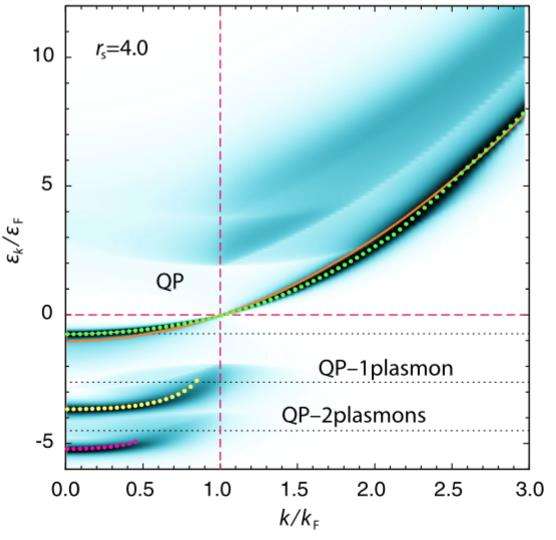A new method to study interactions between electrons in solids and molecules

Researchers at the University of Jyväskylä in collaboration with research groups in Italy, England and Germany have developed a new method to study interactions between electrons in solids and molecules. "This method was applied to study the properties of metals and solved some longstanding open problems," says Robert van Leeuwen, Professor at the University of Jyväskylä.
Measuring electron interactions using light
Shining light on solid matter emits electrons. This is known as the photo-electric effect. The emission is caused by the energy of the light that is transferred to the electrons and which gives them enough energy to leave the solid. When the electrons leave the solid, part of this energy is lost due to interactions with other electrons. By measuring the energies and velocities of the emitted electrons, these losses can be used to determine important properties of the interaction between the electrons. Experimentally, this information is gathered in the so-called spectral function or photo-emission spectrum, which gives the probability of a certain energy loss for a given velocity. The calculation of this spectral function is a big challenge for theorists as it requires a detailed study of the interactions between the particles. This is known as the "many-particle problem."
New ways of studying many-particle interactions
Existing theoretical methods to study many-particle interactions are based on grouping together certain collision processes between the electrons that contribute to the photo-emission spectrum. Because of the difficulty of the many-particle problem, this cannot be done exactly, and approximations must be used. However, the standard method led to theoretical difficulties, as including more complicated collision processes gave contributions with negative probabilities. "A new theoretical method was developed to solve this unphysical result," says Robert van Leeuwen. The method was applied to calculate the photo-emission spectrum of simple metals and very good agreement with experiment was obtained. Among other things, it was found that energy losses to plasmons, a kind of sound wave in an electron liquid, were described properly.
Provided by University of Jyväskylä





















